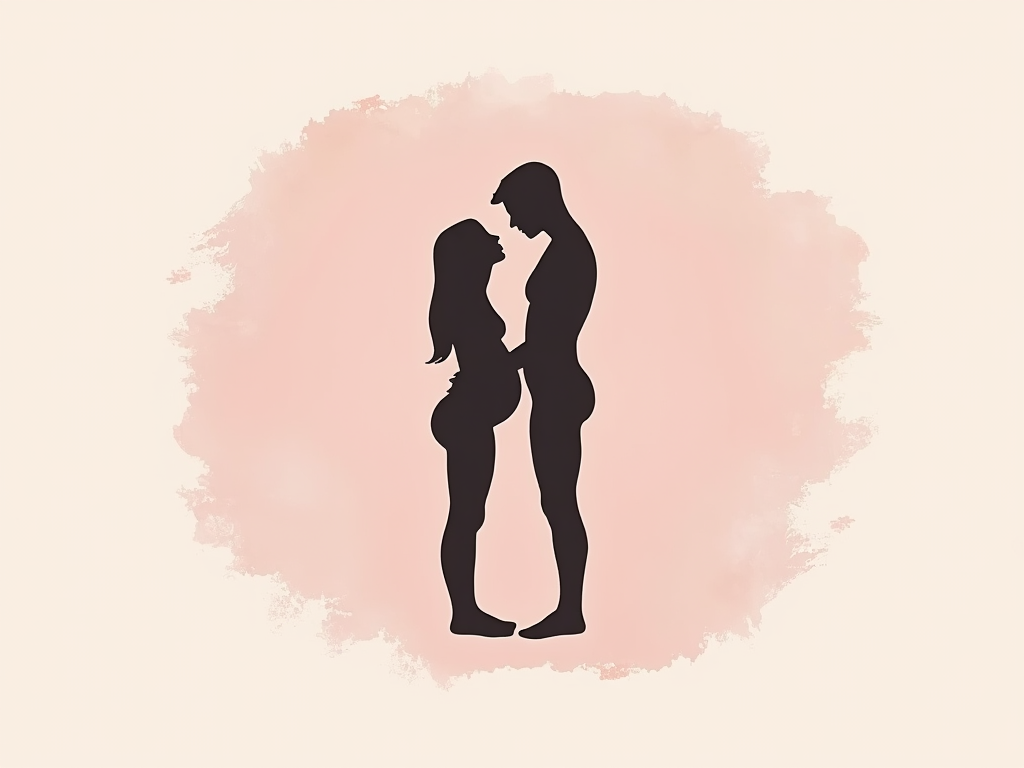
Girl with No Butt: 11 Problems Only Women with Flat Posteriors Understand
Reading time: 8 minutes
Table of Contents
- Introduction: Embracing Your Body in a Curve-Obsessed Culture
- The Cultural Context: How Beauty Standards Evolved
- 11 Problems Only Women with Flat Posteriors Understand
- Building Confidence: Embracing Your Natural Shape
- Styling Tips: Dressing to Flatter Your Figure
- Exercise Options: To Build or Not to Build?
- Celebrity Inspiration: Flat and Fabulous
- Embracing You: Your Body Journey Forward
- Frequently Asked Questions
Introduction: Embracing Your Body in a Curve-Obsessed Culture
In a world where social media celebrates the Kim Kardashians and Jennifer Lopezes of the world, having a flat posterior can sometimes feel like drawing the short straw in the genetic lottery. But here’s the truth: every body type comes with its own set of challenges and advantages, and the “flat booty club” is no exception.
The reality is that body types fall along a spectrum influenced by genetics, ethnicity, lifestyle, and countless other factors. While our culture may currently fixate on fuller figures, beauty standards are constantly evolving—what’s celebrated today wasn’t necessarily the ideal a few decades ago, and likely won’t be a few decades from now.
This article isn’t about changing your body or conforming to current trends. Rather, it’s about acknowledging the unique experiences of women with flat posteriors, providing practical solutions to common challenges, and celebrating the beauty of your natural shape. Because confidence doesn’t come from having a specific body type—it comes from embracing the one you have.
The Cultural Context: How Beauty Standards Evolved
The Shifting Posterior Paradigm
Beauty standards aren’t universal or static—they’re cultural constructs that change drastically across time and geography. In the 1920s, the flapper ideal celebrated a boyish figure with minimal curves. The 1950s brought us Marilyn Monroe’s hourglass silhouette. The “heroin chic” look dominated the 1990s, while the 2010s ushered in what many call the “era of the booty.”
According to a study published in the Journal of Evolution and Human Behavior, preferences for body proportions vary significantly across cultures. Dr. Elizabeth Cashdan notes, “What’s considered attractive in one culture may be completely different in another, suggesting these preferences are largely socially constructed rather than biologically determined.”
The Media Influence
The rise of social media has amplified certain body ideals while simultaneously creating more visibility for body diversity. Instagram filters, strategic posing, and even surgical enhancements have created often unrealistic standards that can make women with naturally flat posteriors feel inadequate.
Lisa Wade, Ph.D., a sociologist specializing in gender studies, explains: “Social media hasn’t just reflected our beauty standards—it’s actively shaped them by exposing us to highly curated, often manipulated images at an unprecedented rate and volume.”
Understanding this context is crucial because it reminds us that today’s “ideal” is simply a temporary cultural preference, not an objective measure of beauty or worth.
11 Problems Only Women with Flat Posteriors Understand
Fashion Frustrations
1. The Saggy Jeans Syndrome
When you try on a pair of jeans that fit perfectly at the waist but hang limply around your backside, creating that deflated balloon look. As Sarah, a 28-year-old marketing executive, shares: “I’ve literally had salespeople tell me to try the ‘curvy’ fit jeans when I’m anything but curvy. Those just create even more empty fabric space!”
2. The Belt Dependency
Without the natural shelf of a rounder posterior to keep pants in place, you’ve developed a permanent dependency on belts. Even then, there’s the constant “hike-up” dance throughout the day as gravity works against you.
3. The Dress Disappointment
Many bodycon dresses and fitted styles are designed with curves in mind. Without the posterior projection, these dresses often hang awkwardly or create unflattering lines where the fabric fails to contour to a non-existent curve.
Social Situations
4. The Unwanted Commentary
From the not-so-subtle “you’re so flat back there!” observations to the well-meaning but uncomfortable “you should try squats,” navigating social commentary about your body can be exhausting. These comments reflect our culture’s strange comfort with discussing women’s bodies as public property.
5. The Seated Surface Discomfort
Hard chairs are your nemesis. Without natural cushioning, you feel every bit of that wooden bench or stadium seat. Many women report bringing cushions to events or choosing seating strategically to avoid discomfort during long periods of sitting.
6. The “Before” Assumption in Fitness Spaces
In gym culture, there’s often an assumption that a flat posterior is a “before” picture—something to be “fixed” through dedicated glute workouts. This creates an uncomfortable environment where your natural body shape is treated as a project rather than a valid variation of human anatomy.
Psychological Impacts
7. The Swimsuit Shopping Dread
Finding swimwear that flatters a flat posterior can be an exercise in frustration. High-cut styles that look amazing on curvier figures can accentuate flatness, while many contemporary styles are specifically designed to showcase curves that aren’t there.
8. The Constant Comparison Trap
In a media landscape saturated with enhanced posteriors, it’s easy to fall into the comparison trap. Many women report checking out other women’s shapes and feeling inadequate, despite knowing intellectually that body diversity is natural and beautiful.
9. The “Not Enough Woman” Feeling
Perhaps the most damaging impact is the subtle messaging that curves equal femininity. Women with flatter figures sometimes report feeling “less womanly” or “boyish”—a harmful notion rooted in arbitrary beauty standards rather than any meaningful measure of womanhood.
Practical Considerations
10. The Shorts Struggle
Finding shorts that flatter a flat posterior is a unique challenge. Too loose, and they create the “diaper effect”; too tight, and they emphasize what isn’t there; too short, and they ride up awkwardly without curves to keep them in place.
11. The Padding Predicament
The decision of whether to use padded underwear presents both practical and philosophical questions. Is enhancing what you don’t naturally have empowering or a concession to problematic beauty standards? There’s no single right answer, but it’s a uniquely complex consideration for women with flat posteriors.
Building Confidence: Embracing Your Natural Shape
Reframing Your Perspective
Building confidence starts with challenging negative thought patterns about your body. Consider these mindset shifts:
- Recognize the diversity of beauty – Throughout history and across cultures, beauty ideals have varied dramatically. Your body type has been celebrated in different eras and continues to be admired in many contexts.
- Focus on function over form – Your body’s primary purpose isn’t decoration. Appreciate what your body does for you rather than fixating on how it looks.
- Question “ideals” – Remember that many “perfect” posteriors you see in media are the result of specific camera angles, surgical enhancement, or digital manipulation.
Psychologist Dr. Jennifer Taitz suggests: “Instead of asking ‘How does my body look?’ try asking ‘How does my body feel?’ and ‘What is my body capable of?’ This shifts focus from appearance to appreciation.”
Practical Confidence Builders
Beyond mindset, practical strategies can help build confidence:
- Create a positive social media environment – Follow accounts that celebrate diverse body types and limit exposure to accounts that promote unrealistic or homogeneous beauty standards.
- Develop a personal style – Rather than trying to conform to trends designed for different body types, develop a signature style that celebrates your unique proportions.
- Practice positive self-talk – Challenge negative thoughts about your body with deliberate positive affirmations. This isn’t about denying reality but reframing how you perceive your body.
Styling Tips: Dressing to Flatter Your Figure
The right clothing choices can celebrate your natural shape while creating balanced proportions. Here are expert-backed styling strategies:
Jeans and Pants
- Look for back pocket placement – Pockets positioned higher and closer together create the illusion of lift.
- Choose strategic details – Embellishments, yokes, and contoured waistbands can add dimension.
- Embrace mid-rise cuts – These typically create better proportions than extremely high or low rises for flatter posteriors.
- Consider European brands – Many are cut for less curvy figures compared to American brands designed for curvier proportions.
Celebrity stylist Karla Welch notes: “For clients with flatter posteriors, I focus on creating balance through silhouette rather than trying to create the illusion of curves that aren’t there. It’s about celebrating the body’s natural lines.”
Dresses and Skirts
- A-line silhouettes create shape through their cut rather than relying on your body’s curves.
- Peplum details add volume and dimension at the hip area.
- Textured or structured fabrics hold their shape rather than clinging to highlight what isn’t there.
- Strategic ruching or gathering adds visual interest and dimension.
Exercise Options: To Build or Not to Build?
The question of whether to pursue glute-building exercises is deeply personal. Here’s a balanced perspective to help you decide what’s right for you:
Understanding Body Composition
It’s important to understand that body composition—including where you store muscle and fat—is largely determined by genetics. While exercise can enhance your natural shape, it works within genetic parameters.
Sports physiologist Dr. Mark Peterson explains: “Muscle building potential varies significantly between individuals based on factors like muscle fiber type distribution, hormone levels, and genetic predisposition. Everyone can build some muscle, but the extent and shape will vary considerably.”
Exercise Comparison: What Works?
| Exercise Type | Effectiveness for Building Glutes | Time Investment | Equipment Needed | Suitable For |
|---|---|---|---|---|
| Heavy Weighted Squats | Medium-High | 30-45 min, 2-3x weekly | Barbell, squat rack | Experienced exercisers |
| Hip Thrusts | Very High | 20-30 min, 2-3x weekly | Bench, barbell/weights | All fitness levels (modified) |
| Bulgarian Split Squats | High | 15-30 min, 2x weekly | Bench, dumbbells | Intermediate exercisers |
| Pilates | Low-Medium | 45-60 min, 2-3x weekly | Mat (or reformer) | All fitness levels |
| Walking/Running | Low | 30+ min, 3-5x weekly | None | All fitness levels |
Exercise Without Glute Focus
If building your posterior isn’t your goal, that’s completely valid. Exercise offers countless benefits beyond aesthetic changes:
- Functional strength for daily activities
- Cardiovascular health benefits
- Mental wellbeing and stress reduction
- Overall body confidence through physical capability
Personal trainer Roz The Diva emphasizes: “Movement should be joyful and functional, not punishment for having a certain body type. Find physical activities that make you feel good, strong, and capable—regardless of whether they change your appearance.”
Celebrity Inspiration: Flat and Fabulous
While media often highlights curvier figures, many successful celebrities embrace their naturally flat posteriors with confidence and style:
Style Icons
Case Study: Keira Knightley
The award-winning actress has spoken openly about body image pressures in Hollywood while maintaining her distinctive style. Knightley typically opts for structured dresses with architectural elements that complement her slender frame rather than attempting to create the illusion of curves.
“I don’t have a woman’s body, I’m flat everywhere—I have the body of a boy,” Knightley once told the press. “But rather than see that as a defect, I’ve learned to use it to my advantage in selecting roles and crafting my professional image.”
Other celebrities who embrace their naturally less curvy silhouettes include Cameron Diaz, Zoe Saldana, and Taylor Swift—all of whom have developed signature styles that work with their natural proportions rather than against them.
Data Visualization: Celebrity Body Confidence Impact
Impact of Celebrity Body Positivity on Public Perception
Source: Body Image Research Institute Survey, 2022 (n=1,200 women aged 18-35)
Embracing You: Your Body Journey Forward
The path to body acceptance isn’t a straight line—it’s a journey with ups and downs. Here’s your practical roadmap for embracing your natural shape:
- Take a social media inventory – Spend one week noting how different accounts make you feel about your body. Unfollow those that consistently trigger negative comparisons.
- Develop a personal style manifesto – Rather than following trends designed for different body types, identify 3-5 key elements that make you feel confident and build your wardrobe around them.
- Practice gratitude for function – Each day, acknowledge something your body allowed you to experience or accomplish, shifting focus from appearance to capability.
- Find your body-positive community – Seek out friends, online groups, or mentors who celebrate body diversity and create space for authentic conversations about body image.
Remember that your worth isn’t measured in curves—or lack thereof. Your unique shape is just one small aspect of who you are, not a defining characteristic of your beauty, femininity, or value.
As body positivity advocate Jameela Jamil puts it: “Your body is not your art, it’s your paintbrush. Create something meaningful with it rather than worrying about what it looks like.”
What small step will you take today toward embracing your natural shape? The journey begins with that first conscious choice to see yourself through a lens of acceptance rather than critique.
Frequently Asked Questions
Can I actually build a curvier posterior through exercise, or am I limited by genetics?
While genetics determine your basic body structure, most people can build some muscle through targeted strength training. The extent of change possible varies significantly between individuals based on factors like muscle fiber type, hormone levels, and genetic predisposition. Exercises like hip thrusts, squats, and lunges can strengthen and slightly enlarge the gluteal muscles, but dramatic changes in shape typically require consistent training over months or years. For some, even dedicated training won’t create the pronounced curves seen in certain body types. The most realistic approach is to focus on strength and function while accepting your natural proportions.
How do I respond to unwanted comments about my flat posterior?
Unwanted body comments, even those framed as “helpful,” cross personal boundaries. Prepare simple responses that firmly but calmly redirect the conversation: “I don’t discuss my body shape” or “I’m comfortable with my natural build.” For persistent commenters, be more direct: “Those comments make me uncomfortable. Let’s talk about something else.” Remember that you’re not obligated to justify your body to anyone. If the comments come from someone close to you, consider having a private conversation about how these remarks affect you. Sometimes people don’t realize the impact of seemingly casual observations about others’ bodies.
Are there any advantages to having a flat posterior?
Absolutely! Less prominent posteriors can make certain activities more comfortable—many competitive runners, cyclists, and dancers have naturally flatter profiles that can be advantageous in their sports. Fashion advantages include looking great in certain silhouettes that might be challenging for curvier figures, like straight-cut pants and sleek dresses. Many styles of vintage clothing were designed for less curvy body types. From a practical perspective, you’re less likely to experience back pain associated with supporting larger posterior mass, and finding comfortable seating is generally easier. Every body type has its advantages—recognizing these can be part of developing a positive relationship with your natural shape.

Article reviewed by Ljiljana Petrović, Trauma-Informed Love Coach | Healthy Relationships After Emotional Wounds, on May 2, 2025






